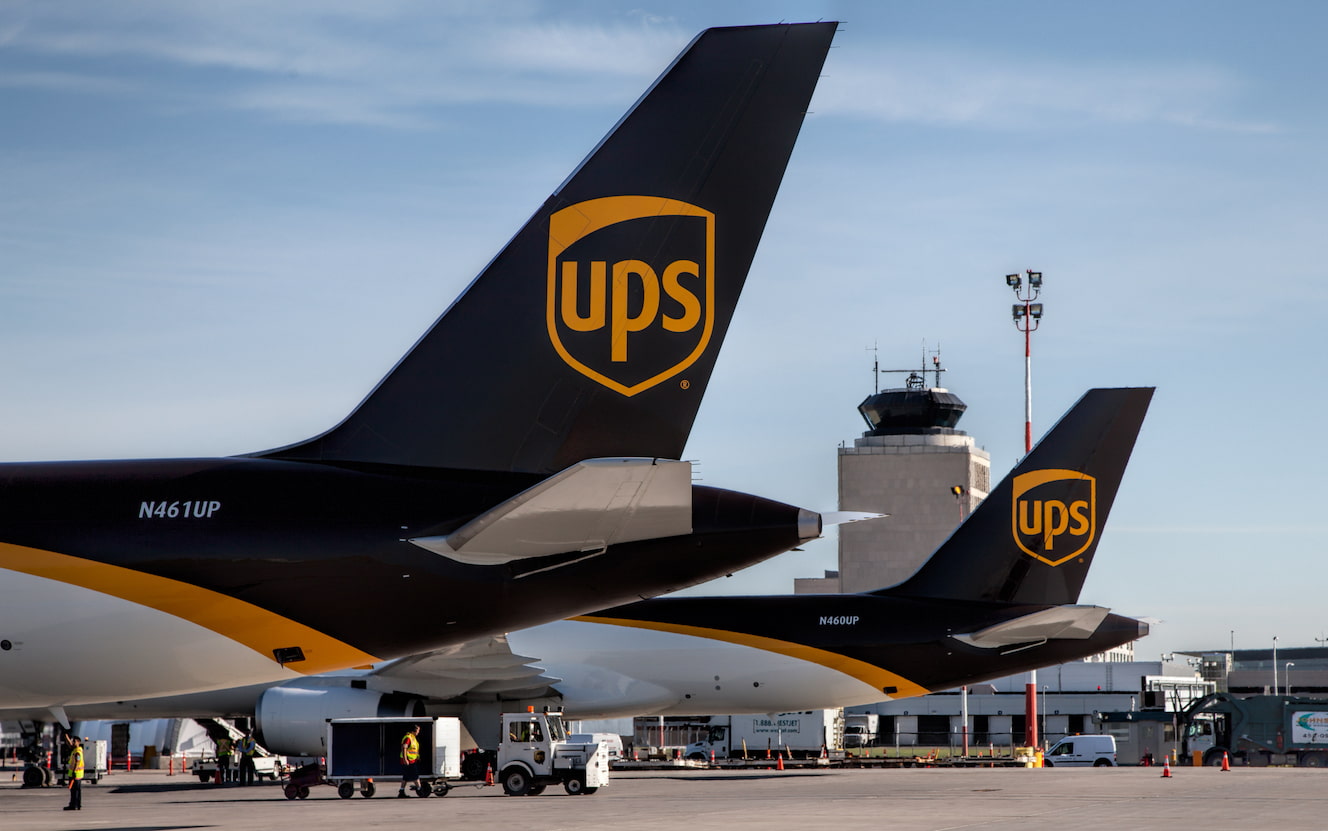How to Save on UPS International Shipping Rates
How UPS determines rates
UPS considers a variety of factors when determining international shipping rates, including package weight, dimensions, contents, and destination. These factors, combined with the selected service level and additional services, will ultimately determine the cost. Here is a closer look at these factors and how they affect UPS international shipping rates.
Weight
One of the main factors that UPS considers in determining international shipping rates is package weight. UPS bases its international shipping rates on a package's actual and dimensional weights. The actual weight is simply the package's weight measured on a scale, while dimensional weight takes into account the size of the package.
For example, if you're shipping a light but large item, such as a pillow, it may have a higher dimensional weight than its actual weight. UPS will use the greater of the two weights to calculate shipping rates.
Dimensions
In addition to weight, UPS considers package dimensions when determining international shipping rates. For example, the UPS shipping calculator considers the package's length, width, and height in calculating rates.
To save on international shipping rates with UPS, be sure to pack items securely and use appropriate packaging materials. This can help minimize excess space and prevent the package from being classified as oversized, which can result in higher shipping rates.
Contents
The contents of a package can also affect shipping rates. UPS offers special services and resources for shipping restricted or prohibited items, and these services may come at an additional cost. Additionally, UPS may require special documentation for certain items, such as hazardous materials or high-value items.
Be sure to check the UPS list of restricted and prohibited items before shipping, and consider using special packaging or insurance for valuable items.
Destination
Another important factor that impacts UPS international shipping rates is the destination country. Shipping to certain countries may require special documentation or have additional restrictions, potentially leading to higher rates.
Some destinations may also be subject to surcharges based on market conditions. For example, UPS may impose a fuel surcharge on packages shipped to certain destinations if fuel prices are high.
UPS surcharges
Surcharges are additional fees that may be applied to UPS international shipping rates. These fees are typically related to fuel prices, residential deliveries, and shipping capacity. To avoid unexpected surcharges, it's important to stay informed about the current UPS surcharge rates. The UPS website offers a comprehensive list of current surcharges and how they may impact shipping rates. Here are a few that you may encounter.
Security surcharges
If you're shipping internationally with UPS, your shipping rates may be affected by security surcharges. These surcharges are imposed in response to increased security measures and fees at international destinations, such as airport and customs inspections. Security surcharges can vary based on the destination country and may change based on security needs.
Fuel surcharges
In addition to security surcharges, UPS could impose a fuel surcharge on international shipping rates. This surcharge is based on fuel prices and can fluctuate frequently based on market conditions.
Residential surcharges
UPS applies a residential surcharge for packages delivered to residential locations or picked up from residential areas. This surcharge also applies to some business locations, such as churches and schools, with a delivery process similar to residential addresses. To avoid residential surcharges, you can opt for delivery to a UPS Access Point location or a commercial address.
Peak season surcharges
Peak season surcharges are additional fees that are typically applied during busy shipping times, such as holidays or the end-of-year shopping season. These surcharges help cover the increased shipping cost during peak periods, when delivery volume is high and resources are stretched.
Capacity surcharges
Capacity surcharges are additional fees that carriers like UPS impose when demand for shipping exceeds available capacity. This can result in higher rates for package delivery, as increased demand may require UPS to use alternative methods or resources to meet demand.

UPS international shipping services
Now that you understand the basics of UPS international shipping rates, it's time to explore the various options and services available for your international shipments. UPS offers several different international shipping services with varying delivery speeds and added services. Depending on your needs, one service may be a better option for your shipment than another, so let's break down the different UPS international shipping services.
UPS Worldwide Express Plus
UPS Worldwide Express Plus is the fastest international service level offered by UPS. It offers delivery by 8:30 am to Canada, and 9:00 am delivery to all other destinations. This includes next day delivery to Canada, two-day delivery to Europe, and two or three-day delivery to Asia.
When to use UPS Worldwide Express Plus
This service level is best for time-sensitive international shipments that need guaranteed early-morning delivery.
UPS Worldwide Express
UPS Worldwide Express guarantees delivery to international destinations by 10:30 am or 12:00 pm. This includes next-business-day delivery to Canada and documents shipped to Mexico. Shipments arrive in Europe and Latin America within two business days and take two or three business days to arrive in Asia.
When to use UPS Worldwide Express
This service level is a good option for time-sensitive international shipments that need guaranteed morning delivery. It is more cost-effective than the UPS Worldwide Express Plus service level while providing reliable and relatively quick delivery.
UPS Worldwide Saver
UPS Worldwide Saver offers the most cost-effective international shipping option, with delivery by end of day for most major markets. Delivery to Canada and documents shipped to Mexico are guaranteed delivery by the end of the next business day. Shipments to Europe and Latin America arrive with second business day delivery, while shipments to Asia arrive within two or three business days.
When to use UPS Worldwide Saver
This service level is a great option for budget-conscious shippers or shipments that do not require expedited delivery.
UPS Worldwide Expedited
UPS Worldwide Expedited delivers parcels within two to five business days. Delivery to Canada is guaranteed in two business days, while documents shipped to Canada and Mexico will arrive the next business day. Shipments arrive in Europe within three or four days. Asia and Latin America are delivered within four or five business days.
When to use UPS Worldwide Expedited
This service level is a good option for international shipments that do not require overnight delivery, but still need to arrive within a few business days.
UPS Standard
International UPS Standard shipping offers day-specific delivery estimates that allows customers to plan their delivery dates. With transit times based on the origin and destination of shipments, UPS Standard balances shipping speed with economy pricing.
When to use UPS Standard
This service level is a good option for international shipments that do not require expedited delivery. Customers get reliable UPS shipping, with better rates than faster service levels.
UPS international shipping rates by service
Let's take a closer look at how these international service levels and their rates compare to each other. In this example, we're shipping a 12 lb package in a small UPS Express Box (13 x 11 x 2 in) from New York, New York to major cities around the world.
Shipping to Toronto from New York
Shipping to London from New York
Shipping to Tokyo from New York

UPS domestic rates
Domestic shipping rates are typically less costly than international shipping rates, as domestic shipments require less fuel and don't have to go through customs. However, domestic rates can vary based on the service level chosen.
Whether you're looking to have your domestic shipment arrive within a few days or ASAP, UPS has a service level that will meet your needs. UPS Ground is their most cost effective domestic option, which delivers packages within one to five business days. They also offer two-day and three-day options for shipments that are urgent, but not critical enough to require next-day delivery. If you are looking for premium next-day delivery, UPS has options that will deliver by morning, noon, or end-of-day based on your preference.
Shipping insurance
Shipping insurance is another factor to take into account when calculating the cost of shipping. Depending on the value of your shipment, it may be worth investing in insurance to protect against loss or damage during transit.
UPS offers several insurance options for domestic and international shipments. The UPS Declared Value program allows shippers to declare the value of their package, with coverage up to $100 included at no additional cost. Additional coverage can be purchased for a fee based on the declared value of the shipment.
Alternatively, you can choose to insure your shipment with third party shipping insurance—such as EasyPost. Our Shipping Insurance API covers loss, damage, and theft, with coverage starting at 0.5% of declared value. Our straightforward claim process takes less than 10 minutes to complete, and should you have any questions, our support team guarantees you will receive a response within a day.
How to save money on international shipping
EasyPost users can save up to 86% on international shipping rates with UPS. In recent years, UPS has enabled EasyPost users to save even more by waiving peak season surcharges on international shipments sent from the US. By working with EasyPost's team of shipping experts, you can be sure that you're fully maximizing your savings on international shipments with UPS.
Getting started is easy. Just sign up for a free EasyPost account, activate UPS on your Carrier Accounts Page, and then you are ready to start printing labels. Whether you're a small business shipping 100 packages a month or a large enterprise shipping 10,000 packages a month, you can access exclusive rates without any hidden fees or volume minimums.
Ready to learn more? Talk to one of our shipping experts to learn how EasyPost can support your shipping needs, whether you're shipping internationally or domestically.